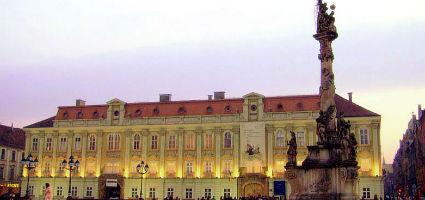2025. April 30. Wednesday
Temesvár Fine Art Museum - Timişoara
 |
Address: 300085, Timişoara P-ţa Unirii nr. 1
Phone number: (256) 491-592
E-mail: muzeuldeartatm@clicknet.ro
Opening hours: Tue-Sun 10-18
The "European Paintings" permanent exhibition is closed at the moment due to resurrection! |
Ormós Zsigmond (1813-1894), the founder of Banat Museum, started buying the objects of art after 1857, when, because of political persecutions, he sold his fortune inherited from his uncle and autoexiled to Italy. He studied the history of Italian art in the 14-19th centuries, he visitied museums, libraries, archeological excavations and the studios of the artists in this country and in the West of Europe, he took part in public auctions of objects of art. A few works bought first were sent to the museum in Budapest, then he tried making up a personal collection following mainly the picture of Venice, come out of the studios of the famous masters' disciples.
